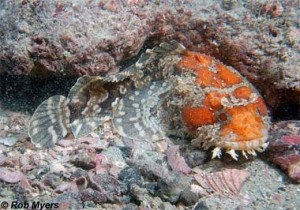 Love to fish? The Everglades is a great spot to do it, since one-third of this place is covered by water! Throughout the park, there are many acres of shallow water flats, mangrove keys, and channels that make great spots to fish! However, fishing from the shore is limited. In the state of Florida, there are specific freshwater and saltwater licenses and regulations to follow. For important fishing information, click here.
Love to fish? The Everglades is a great spot to do it, since one-third of this place is covered by water! Throughout the park, there are many acres of shallow water flats, mangrove keys, and channels that make great spots to fish! However, fishing from the shore is limited. In the state of Florida, there are specific freshwater and saltwater licenses and regulations to follow. For important fishing information, click here.
One type of fish that is plentiful in the waters of the Everglades is the spotted sea trout. For this article, we wanted to share with you some basic information on this fish that makes the Everglades, amongst other places, its home. Also, it is a pretty tasty fish for you to bring home and cook up!
Sea trout, also known as Cynoscion nebulosus, can be found inshore and in deep waters up to 33 feet deep. They are dark gray or green on the top part of their bodies with blue/white/silver colorings underneath. They have black spots on their back, dorsal fin, and tail, but have no scales on their soft dorsal fin. Sea trout have one to two prominent canine teeth at the front of their upper jaw.
They feed on shrimp, crabs, mullet, pinfish, and baitfish. Their spawning season is between March and November. They swim in small schools and don’t stray too far from the estuaries that they were born in.
If you’re looking to catch a sea trout and you do, it’s important to return them to the water immediately if you don’t plan on keeping them to bring home. They are a delicate fish and can be easily harmed. The biggest sea trout ever caught in Florida was 17 pounds, 7 ounces and it was caught in Ft. Pierce. On average, most sea trout an angler will come across will weigh around 4 pounds but they can easily get up to 15 pounds in weight.
Like stated above, there are specific regulations when it comes to catching different species of fish in Florida’s state waters. With sea trout, you can catch them and keep them if they are between 15 and 20 inches in length; the daily bag limit of sea trout in Florida waters is 4 fish per angler. In Florida, spotted sea trout fishing is permitted throughout the entire year. Fishing for sea trout is legal, if they are caught with a hook and line or a cast net.
If fishing isn’t your thing, but you like being on a water, then an airboat ride may be the right kind of trip for you in the Everglades. Captain Mitch’s Airboat tours brings guests all over the Everglades for spectacular views as you make fun memories. To book an airboat tour, click here or call 800-368-0065.
 There are around 300 different species of fish swimming in the waters of the Everglades National Park. Some of them look straight out of pre-historic times, like the Gulf toadfish. These fish make their presence know. They’re one of the few fish out there that can make sounds that humans can actually hear. Read the list below for some more interesting facts on this fish:
There are around 300 different species of fish swimming in the waters of the Everglades National Park. Some of them look straight out of pre-historic times, like the Gulf toadfish. These fish make their presence know. They’re one of the few fish out there that can make sounds that humans can actually hear. Read the list below for some more interesting facts on this fish: Ever heard of the lionfish? It’s actually quite a pretty fish with its pectoral fins, brownish stripes; however, it’s not so good for the Everglades. It’s considered an invasive species. Invasive species, non-native species to an area, happen to have the ability to live and thrive in habitats that are not their true home or region. Lionfish haven’t been a huge problem yet in the Everglades, but their numbers are increasing each year. In 2014, 13 lionfish were removed from Everglades National Park.
Ever heard of the lionfish? It’s actually quite a pretty fish with its pectoral fins, brownish stripes; however, it’s not so good for the Everglades. It’s considered an invasive species. Invasive species, non-native species to an area, happen to have the ability to live and thrive in habitats that are not their true home or region. Lionfish haven’t been a huge problem yet in the Everglades, but their numbers are increasing each year. In 2014, 13 lionfish were removed from Everglades National Park.





